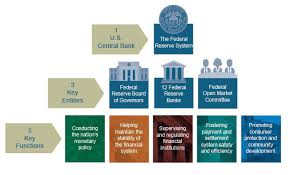The Federal Reserve reviews its monetary-policy framework

SARA GORATH was a little surprised when she was asked to speak at an event held by the Dallas Federal Reserve. What could a woman who runs a food bank have to say about monetary policy? On February 25th she found herself describing to Richard Clarida, vice-chairman of the Federal Reserve, the problems her customers face, including “how do you cut open a butternut squash if you don’t have a sharp knife?”
The event was the first of many “Fed Listens” sessions, part of an official review of the Fed’s monetary-policy framework. In addition to the likes of Ms Gorath, the Fed will hear from business and trade-union leaders, as well as academics. If the economy were a squash, monetary policymakers want advice on how to carve it.
Key questions will include whether the Fed should expand its toolkit and improve its communication. Also up for discussion is whether there might be better ways to meet its 2% inflation target (the level of the target itself will be taken as given). Perhaps, for example, rather than aiming for 2% regardless of recent history, policymakers should try to make up for past misses and aim for an average of 2% instead?
One could ask why the review is happening now; economists have argued over the Fed’s framework for years. The first official answer is that economic conditions are ripe for some chin-stroking, with unemployment at its lowest level in decades and inflation close to target. Now is as good a time as any for the Fed to take stock.
The second relates to the decline in interest rates around the world over the past decade, which could merit a change in the way monetary policymakers operate. Although central bankers should still be able to hit their inflation target in good times, when recessions strike they will find interest rates increasingly stuck at the lower bound of zero, with no room to cut them when the economy needs stimulating.
The fear is that this downward drift blunts central bankers’ tools. If inflation hits the target in good times, but undershoots it in bad, inflation expectations could drift downwards. Since these expectations then influence wage and pricing decisions, they would in turn have an impact on actual inflation, making it harder to achieve the inflation target.
Average-inflation targeting would mean that interest rates would be lower for longer after an inflation-sapping recession, as policymakers aim for a temporary overshoot. A shift in the framework could signal to investors and the public that the Fed would use monetary policy more aggressively to stimulate the economy in a recession, generating the sort of self-fulfilling confidence that could help a recovery.
It might not work, of course, if no one believed that the Fed would be able to resist tightening policy when the economy did get going. It could also backfire. What if, in the process of temporary overshooting, inflation expectations began drifting above the target? On February 26th Pat Toomey, an American senator, sternly reminded Jerome Powell, the Fed’s chairman, that a period of overshooting would be a period without price stability.
Cynics will dismiss the review as window-dressing. Even if Ms Gorath’s food bank contributes to her community, she had a point when she questioned her ability to inform monetary policymakers. And the bar for change seems high. The review’s unofficial context is a decade of the Fed struggling to hit its inflation target and a labour market that was too lousy for too long. Even after that, Mr Clarida reckons the existing framework has “served us well”.
Defenders could point out that central banks are hardly nimble creatures. If a reform of the Fed’s framework were in the offing, this is the sort of process you might expect to precede it. The idea of a rethink certainly has some senior supporters. On February 22nd John Williams, the head of the New York Fed, said that the risk of slipping inflation expectations called for a reconsideration of the “dominant inflation-targeting framework”.
Even if, as most expect, there is no formal change, the discussion could still lead to a greater tolerance of temporary overshooting after periods of limpness. Interest-rate rises are on hold for now, which could be evidence that the Fed is rethinking its carving technique. But with inflation still hovering around its target, it has not yet made a mark.





